Top Uses of Kiosks and Kiosk Software Across Industries

In today’s fast-paced world, it’s no surprise that self-service kiosks have become extremely popular and are popping up in more locations. From automated teller machines to retail vending machines, businesses are realizing the benefits of using kiosks. Brands from different industries are switching to interactive kiosks for tasks like providing information, promoting products, taking customer orders, among others.
And if we consider the rate at which technology is advancing, kiosk software may be able to take on the most complex challenges and create unique solutions. Kiosks may soon become customary in all industries. Digital signage and touchscreen displays can contribute to customer convenience or employee productivity for many businesses.
In this article we’ll take a look at the cost-saving or lucrative ways that businesses the world over are using kiosks and kiosk software.
Vending Kiosk / Vending Machine
The invention of the vending machine in the 1880s introduced the concept of self-service. The first versions were small stands that offered products like gum, stamps, and postcards. Soon came vending kiosks that dispensed soda cans, and the rest, as they say, was history. They are now stocked with books, electronics, snacks, and everything in between. Say for instance, you’re travelling and you forgot your earphones at the hotel, just head over to the nearest kiosk and purchase a new set without any hassle. Kiosks make product vending a breeze.
Global vending machine revenue surpassed $23 billion in 2018. Cold beverages, including soft drinks, juices, and bottled water comprise the largest product category, pegged at 31% of vending machine purchases. The vending business is still predominantly cash-based, but roughly 59% of vending machines are now accepting cashless transactions via credit cards or mobile wallets.
Banking Kiosk

The financial world is the most popular place for interactive kiosks. It all started in 1967 when the first cash machine was installed in London, although it wasn’t until 1972 that the first ATM was put into use. Today, making withdrawals and deposits in ATMs seems like second nature to many, and experts believe that this trend will carry on.
In spite of concerns about oversaturation and the future of cash, the global ATM market continue to expand exponentially. In 2018, there were 3.24 million ATMs in the world and it is projected that the market will grow by $7.55 billion this year till 2024.
Aside from the use of ATMs, self-service financial kiosks are helping to bridge the gap between online and in-branch banking. A study revealed that more than 80% of clients accessed online or mobile banking at least once a month. Those who are used to visiting their local banks to do their transactions will find that kiosks speed up and streamline the process.
Long queues often present a big problem in bank branches. This can be resolved by the use of interactive kiosks as these can significantly reduce waiting times by providing an alternative to traditional tellers. Intuitive and interactive displays can also streamline the way clients complete their transactions, resulting in a more meaningful banking experience.
Kiosk for Grocery Stores and Supermarkets
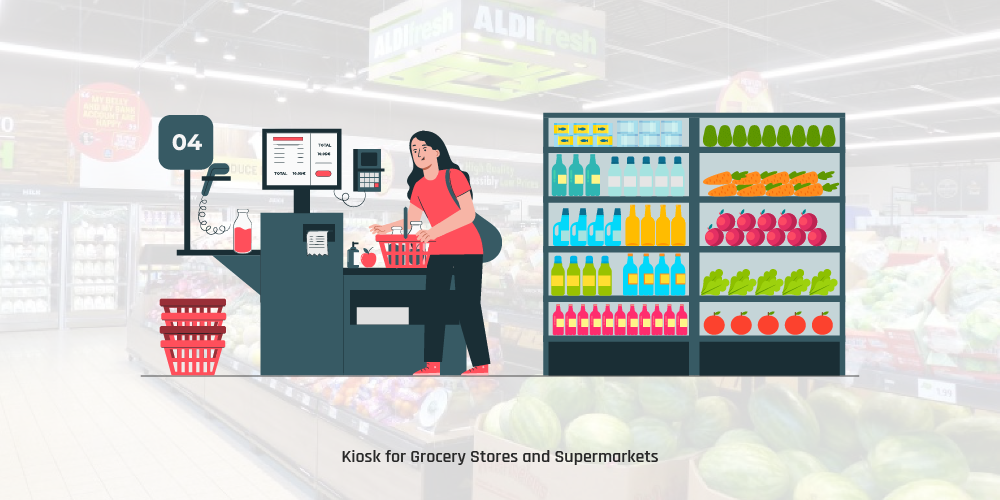
For the typical grocery shopper, self-service kiosks offer a quick checkout. This is one of the primary reasons why they have become commonplace in grocery stores across the globe.
Today, you still have to scan each item separately, but upgraded self-checkout kiosks are gradually being introduced into the market. These kiosks come with a built-in tunnel scanner that will allow you to place your items on a conveyor belt where they are automatically scanned, including unlabeled products like fresh produce.
Grocery stores and supermarkets are also installing wayfinding kiosks at strategic spots to allay the frustration of locating items. These kiosks can also keep customers from requesting assistance from employees who are usually preoccupied with tasks like cleaning or stocking. And when the kiosk is not in use, store owners can take advantage of the idle screen to promote promos or rewards.
Kiosk and Digital Signage for Fast Food Chains
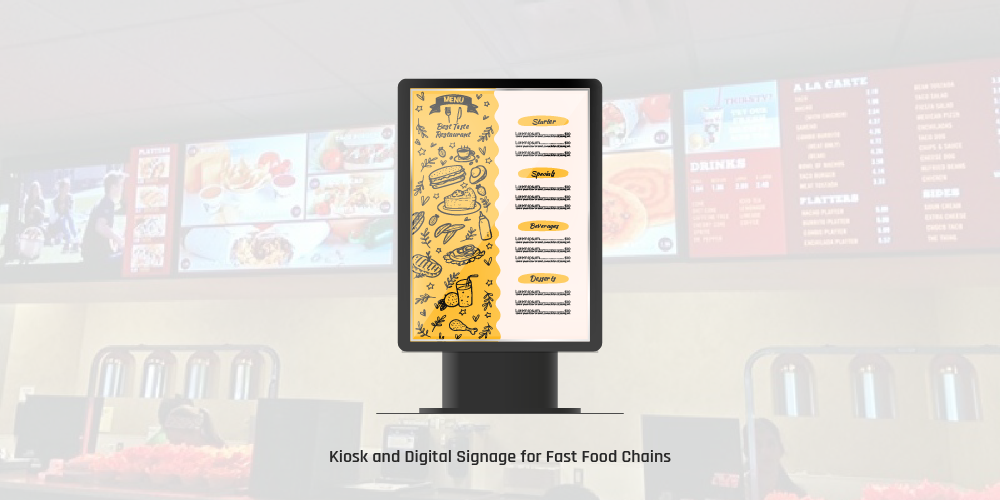
You know how e-commerce shops got us used to the convenience of one-click shopping. That’s precisely what restaurants and major fast food chains are doing with kiosks. KFC, the world’s second-largest restaurant chain after McDonald’s, plans to have 5,000 kiosks in its stores worldwide by 2020. Other popular players in the industry like Subway, Hungry Jack’s, Taco Bell, Dunkin’, and Dominos are also investing on in-store technology, including digital signage and interactive kiosks.
This mass installment explains studies predicting that the self-service kiosk market will soar to $30.8 billion by 2024. With kiosks, restaurants can be smart about which menu items to showcase and this makes it easier to upsell or cross-sell. This ability to curate the menu enables restaurants and fast food chains to not just grow their topline, but also their bottom line, and it’s where kiosks thrive.
Kiosks also discard the intermediary (i.e. the cashier) from the ordering process, freeing them to do other tasks like greeting customers or assisting in food preparation during high-volume times. This provides a more seamless and satisfying experience for customers.
Kiosk Software for Check-in Counters
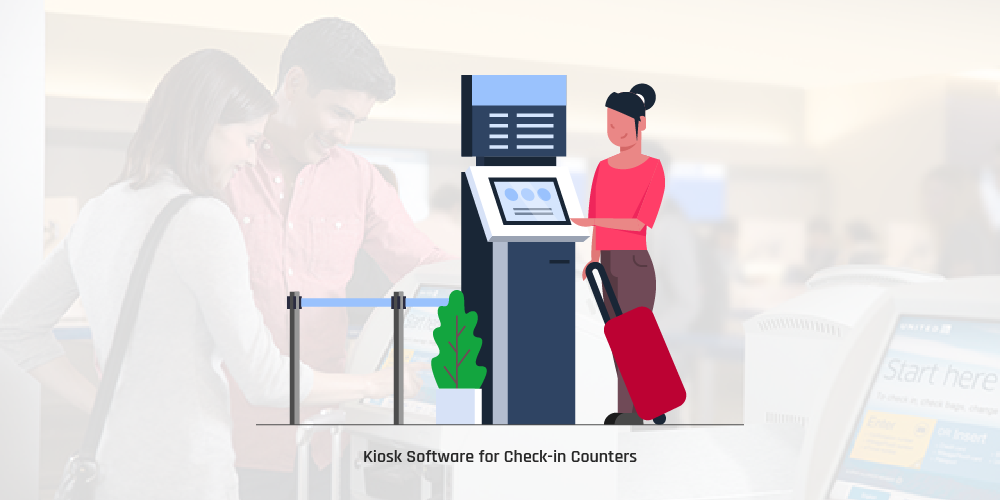
Checking in for an airline flight, a hotel room, or a doctor’s appointment is now easier and more convenient than ever with the use of automated kiosks. Businesses install check-in kiosks to shorten queues and to cut down on wait times. In airports, passengers can check in simultaneously by using a touch-screen display to answer questions and print their boarding passes. The use of advanced kiosk software allows the processing of a large number of passengers to be decentralized from the airport service area itself. This provides a better use of staff resources and reduces bottlenecks while allowing more departing passengers to be processed.
In hotels, there’s no need to drag your luggage through long lines of guests waiting at the front desk. Many routine tasks performed by receptionists can be left to a kiosk including check-in, completion of registration cards, and issuance of room key card. The kiosk software can also be customized for integration with the hotel’s management system so the staff can concentrate on more important matters. This personalizes service and considerably improves guest experience.
And in clinics and hospitals, patient check-in kiosks allow healthcare workers who were previously in charge of the check-in process to redirect their time and effort to other tasks while still being available to help those who may need additional assistance, thereby improving overall facility efficiency.
Kiosk and Digital Signage in Casinos
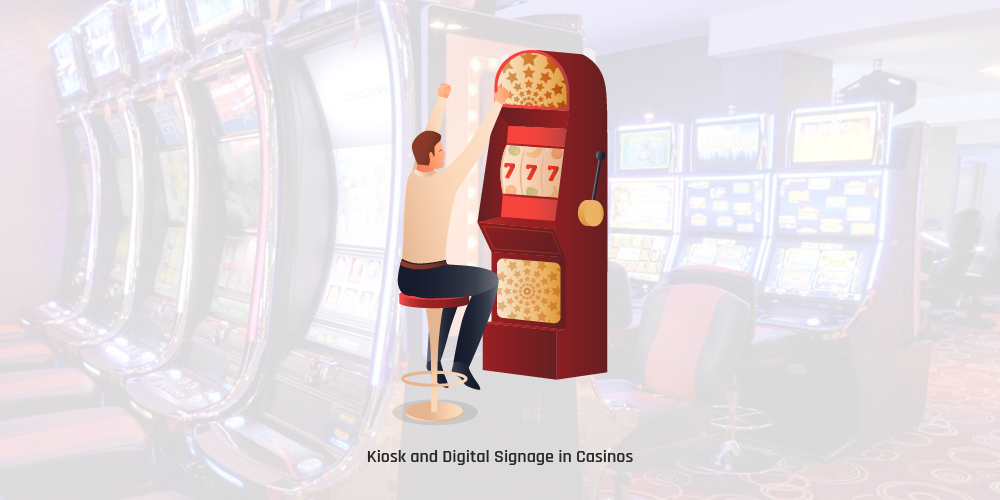
Visit any casino or Pokies and you’ll likely encounter a touchscreen kiosk of some sort. Digital signages are also everywhere to increase engagement, optimize wayfinding, and for targeted advertising.
Slot machines are essentially mini kiosks, but casino management went a step further by integrating loyalty cards into their use. A patron can now slide a card into his/her slot machine, the card starts tracking the activity, and the player is rewarded via loyalty programs.
If there is a new game or application coming soon or already available, it is worth offering patrons the chance to play a demo version on a tablet kiosk. It is common practice to offer them a free-play mode because it can generate a lot of interest in the new game. Players are also less likely to use chips for a trial run.
Casino management often combine the tablet kiosk with a point of sale (POS) function. Players can use the kiosk to process winning tickets and print receipts. In high-end casinos, kiosks can even be configured to process money transfers for customers so they can cash in their winnings and make direct deposit to their bank.
Map Directory / Wayfinding Kiosk Software
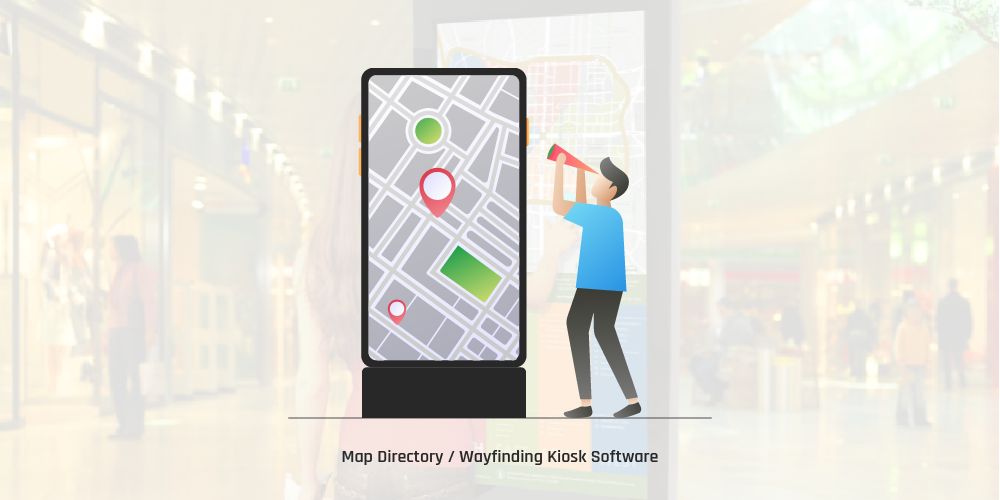
Located in popular tourist destinations, interactive kiosks that offer maps have become very popular. The maps are either in 3D, semi 3D or 2D and can be pinch zoomed or rotated for better viewing.
Inside amusement centers, theme parks, carnivals, and state parks, self-service kiosks offer sightseers and tourists a fast and informative way to get around and enjoy their visit. Kiosk software can even be programmed to have multiple language capability and print maps or scan them onto smartphones using QR tag technology.
A variation of the map directory is the digital directory which is commonly seen in airports, malls, hospitals, and university campuses. It provides invaluable service of helping guests and visitors to find office locations, stores, businesses, and even specific individuals. Aside from offering maps and lists of location data, digital directories can also provide local area information, including weather, popular venues/establishments, and transportation options.
Parting Words…
Kiosks have become a fixture in many industries. Whether you want a quick way to pay and go at grocery checkouts, order at a fast food outlet, or use information points in airports, train stations, at conferences or events, these innovative machines come in handy. They make things easier, both for customers and businesses.
If you wish to learn more about interactive self-service kiosks, or if you have questions in relation to kiosk installation and implementation, Feel free to contact us and we will be more than willing to help.

